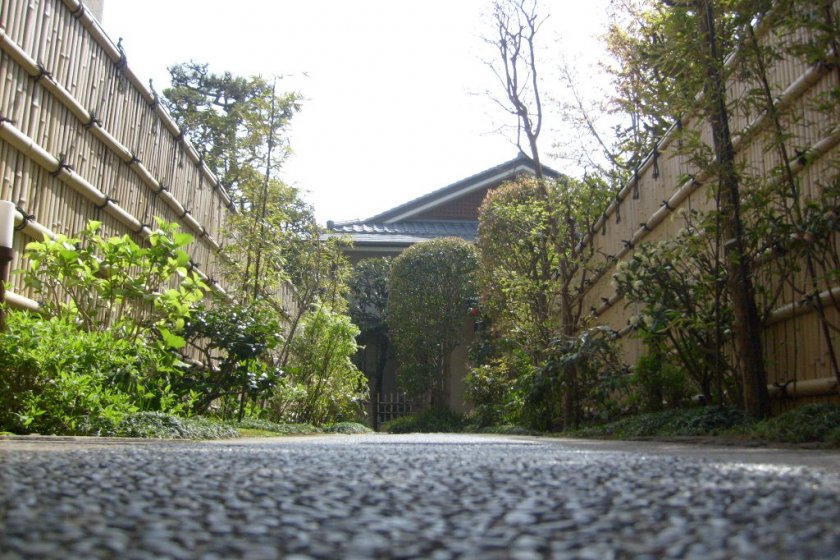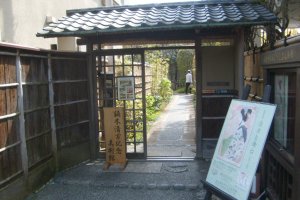Visitors to Kamakura get their souvenirs on and around Komachi-dori, a narrow street lined with dinky shops, cafes and restaurants. It's busy pretty much any time you go there, but if you tire of the jostling throngs, there is a place nearby to escape them. Set back off a quieter side-street, the Kaburaki Kiyokata Memorial Art Museum is not only a good place to take a breather, it's a neat capsule introduction to the life and work of this respected Japanese artist.
Even just as you walk through the simple, elegant gate and along the bamboo-lined path, there's an air of tranquility; it feels like the artist's home that it was. Kaburaki moved here after World War II, just as his career was reaching new heights; in 1938 he had been appointed to the Art Committee of the Imperial Household, and had then received the official position of court painter in 1944.
The interior is also simple and understated, all wood paneling and paper screens, which serves to display the artworks to their best effect. The museum holds nine different exhibitions throughout the year, rotating its collection for the purpose of conservation, but whenever you go you'll see some Bijin-ga, the pictures of beautiful women for which Kaburaki was known.
Before you get to the paintings, there are a couple of exhibits giving an idea of who he was. A few photographs show scenes from his early life, including one taken after his wedding in which he's sporting an incongruous hat better suited to a prohibition-era mobster. Near these, his studio has been preserved as it was when he was using it, looking as if he's just popped out for a silk scroll and will be back in a minute to make a start. It's fun to speculate here: what did he keep in the boxes? What were these big piles of books? Did he use models, and where did they pose?
In the central hall there's an alcove with a hanging scroll and pairs of colorful painted shells, which could easily be imagined adoring a traditional tatami room. Here and in the main exhibition room, the paintings are very easy on the eye, mostly in the alluringly soft pastel tones typical of Nihon-ga, traditional Japanese paintings. The main room also has on display some uncolored sketches, and there are some cabinets with drawers holding a number of Kaburaki's illustrations for books.
It won't take you long to get round, in honesty, but before leaving you might stop off in the lounge. There are a good number of art books here, presumably from Kaburaki's own collection, and you can pick one out to leaf through while sitting at the picture window overlooking the peaceful rock garden. Then by the exit there's a good selection of attractive souvenir goods for sale, among them postcards and prints, fans, bags and hand-towels. They'll be distinct from what you'll find on Komachi-dori, and you won't have to fight through the crowds to get them.







![Purple Sweet Potato Soft-Serve [Location Closed] Purple Sweet Potato Soft-Serve [Location Closed]](https://a3.cdn.japantravel.com/photo/30729-154499/90x60!/kanagawa-purple-sweet-potato-soft-serve-154499.jpg)
























